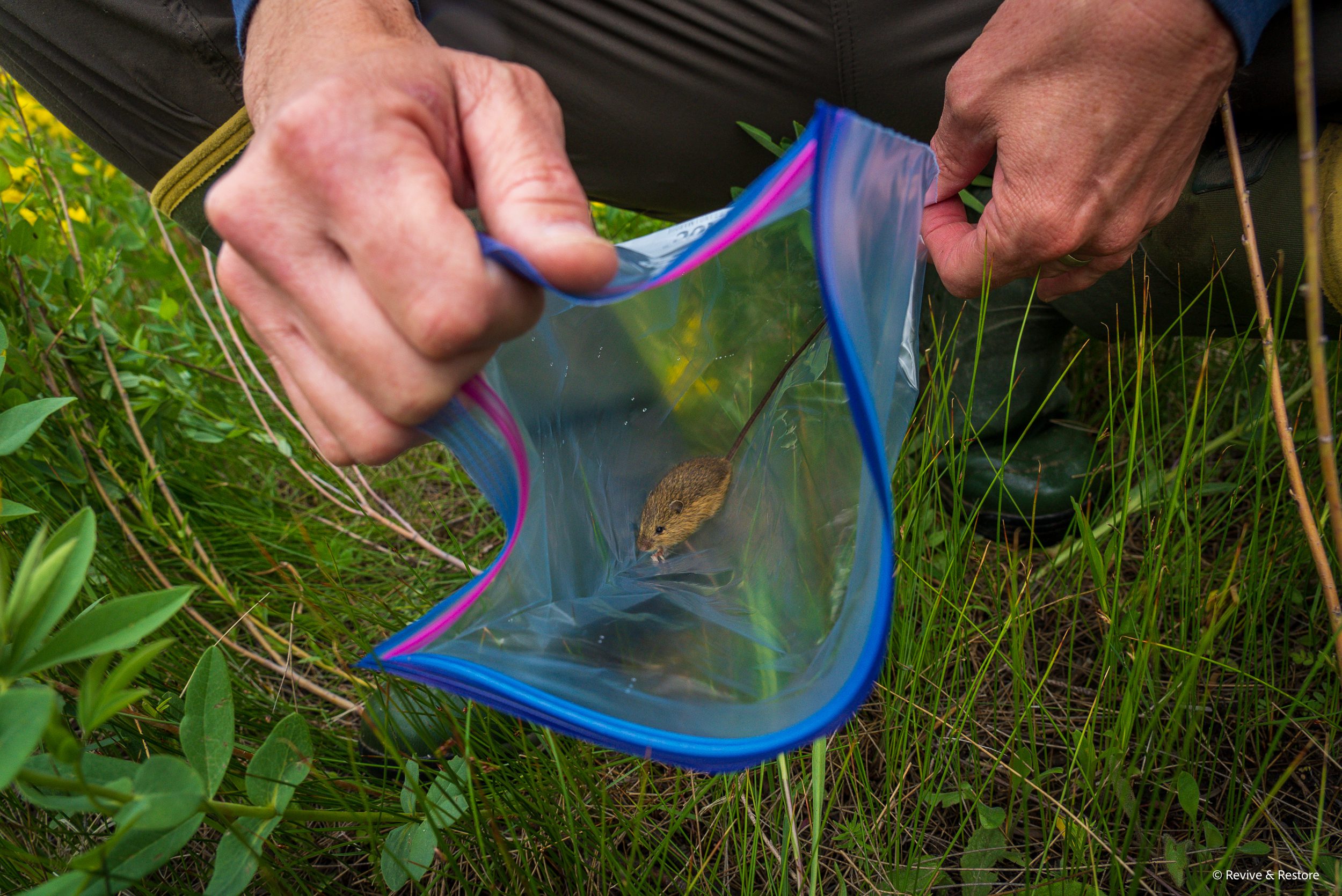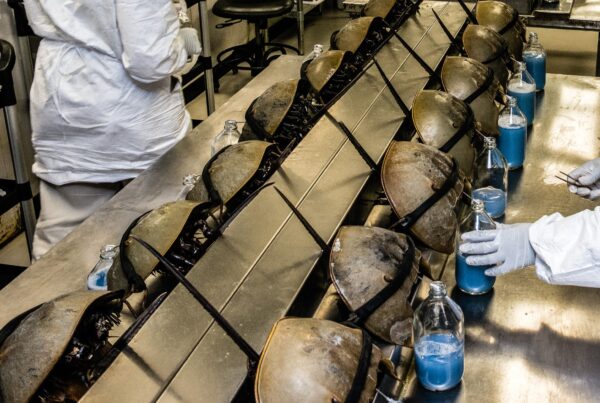
An endangered Preble’s meadow jumping mouse (Zapus hudsonius preblei) is captured during a population survey. Before the mouse was released, a small skin sample was collected for sequencing and biobanking as part of the new program. Credit: Kika Tuff/Revive & Restore.
USFWS Is Creating a Frozen Library of Biodiversity to Help Endangered Species.
Article by Kiley Price // Inside Climate News
The world’s wildlife are facing a barrage of threats caused by climate change, from the loss of suitable habitat to dwindling food supplies. As a result, endangered species across the U.S. are edging closer to extinction at alarming rates—and if they disappear, critical genetic information could vanish with them.
In a new initiative announced on Tuesday, the U.S. Fish & Wildlife Service is working with the nonprofit Revive & Restore and other partners to create a “genetic library” of the country’s endangered species—before it’s too late.
Through a process called biobanking, FWS field staff are gathering biological samples such as blood, tissues and reproductive cells from animals to be cryogenically preserved at extremely low temperatures (at least -256 degrees Fahrenheit) and stored at a USDA facility in Colorado. The samples will also be genetically sequenced and this information will be uploaded to a publicly available database called GenBank, where researchers can study them and compare their genomes to other members of their species.
This frozen library of living cells could be crucial for current and future conservation efforts, particularly for helping introduce genetic diversity into captive breeding programs working to rebuild species populations or even for cloning, experts say.
“21st century conservation challenges require 21st century conservation tools. Biobanking is one such tool that allows us to preserve some of the biodiversity that exists today and ensure it isn’t lost forever.” ”
Seth Willey
Deputy Assistant Regional Director of Ecological Services for the USFWS’s Southwest region, as quoted in Inside Climate News
Since the project launched in January, partners have already collected and cryopreserved samples from five endangered species, including the Mexican wolf, Florida bonneted bat and Sonoran pronghorn. Though the pilot phase of the program includes just 24 U.S. endangered mammals, the end goal is much more ambitious: to biobank every endangered mammal in the country, creating “a repository for our American legacy” of biodiversity, according to Ryan Phelan, the executive director of Revive & Restore.
More posts in News & Media





